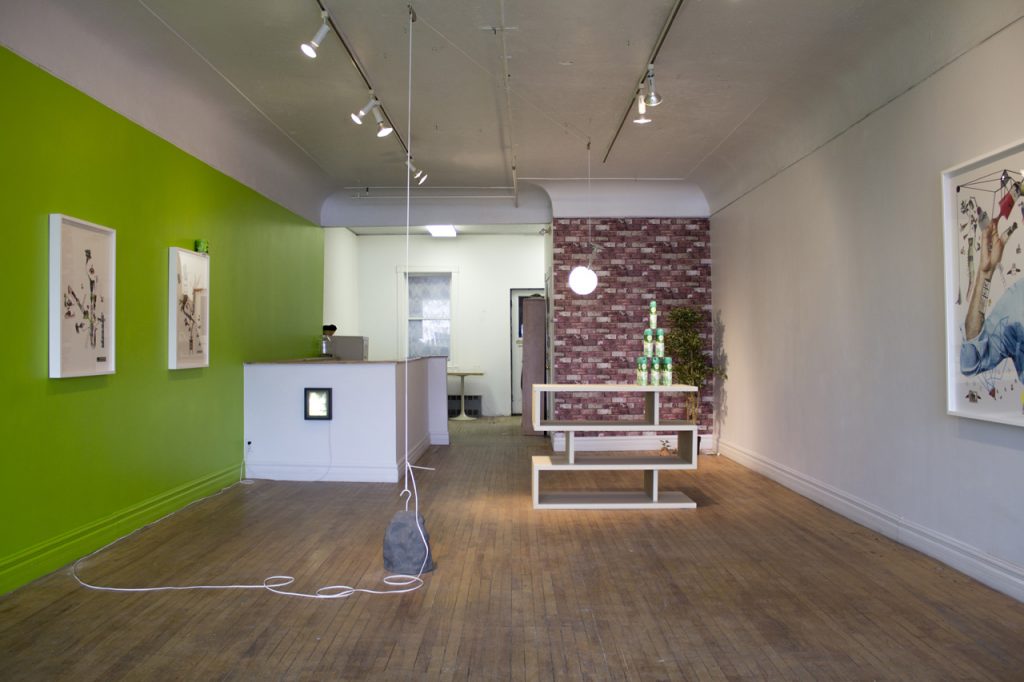When The Centre Loses Hold
March 2, 2017

Accompanying text
by Maty Ralph
How political is your lamp? And when it comes to philosophy, how profound is your desk? Does your kettle whistle, or scream about revolution? Is your chair a degenerate?
Hold on. Perhaps this line of questioning is premature. Maybe I started in the wrong place…
In the beginning there was conception. An idea was born. A design conceived. Materials were considered, chosen, manipulated. Eventually, a physical form manifested. The idea could now be used. But in order to be used it must be sold. Value was determined. Replicas were made. And if all went according to plan, profit was gained.
And so, a timeline is established. The idea, which began in the mind, was executed in the studio, produced in the factory, and sold in the store, finally becomes part of a functioning home, each day inching its way closer to the last stage of life: junk.
All junk began as an idea. But do all ideas turn to junk?
Out of This Light, Into This Shadow…
The Bauhaus was an idea -several ideas, in fact- that would illuminate the world of design forever. The school championed respect for materials, space, aesthetic and functionality. It was a place where art informed craft and where practicality was fused with beauty. This was the birthplace of the International Style.
But soon the shadow of Nazi Germany fell over Europe. To the Nationalists, the Bauhaus was a school of degenerates. The ideas they championed were a threat. And so, like many others, they were silenced.
Luckily, the principles and philosophies that thrived during the Bauhaus’ fifteen years emerged from the ashes of WWII, relatively unharmed. The ideas survived, and were utilized, exploited, edited, abridged, and manipulated over the years. What we are left with are designs standing on the shoulders of thoughts standing on the shoulders of the past.
And with all these changes, what of that past remains? Do our designs still challenge tyranny? Would the Nazis view IKEA as degenerate art? Would they consider your desk lamp a threat?
It’s obvious that the aesthetics of modern design echo the Bauhaus to this day, but Juan Ortiz-Apuey has shown us that when you peel away the facade, there is an emptiness at the core.
Design has gone the way of blockbuster movies and pop music. Formula without thought. Replicate the success of the past, but make it cheaper. And quicker. Trim the fat. Edit out the prophet in favour of the profit.
As an exploration of this inherent vapidity in consumer culture, Out of This Light, Into This Shadow could easily wag its finger at capitalism gone awry, but it doesn’t. If a villain is to be cast in this narrative, corporate greed is as worthy of candidacy as consumer complacency.
It’s not enough for us to conclude that we are being sold a hollow, flimsy version of the past. We already knew that much.
We must also wonder why we don’t expect more; Why we don’t demand a return to form. We grew to accept that the furnishings that surround us need not be innovative or profound or even ethical, as long as the aesthetics are enjoyable.
In our uncritical embrace of transient design we have lost sight of the fact that all junk started out as an idea. We now operate under the reverse pretext that all ideas are destined to become junk. And with that, we lost reverence for innovation and began to throw our ideas out with the rest of the trash.
